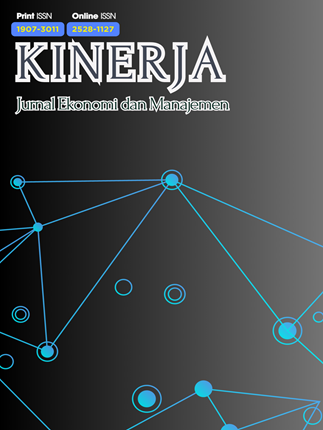The Influence of Social and Economic Protection Function Expenditure and Economic Growth on Poverty in Samarinda
DOI:
https://doi.org/10.30872/jkin.v21i2.15322Keywords:
Social Protection, Function Expenditure, Economic Function Expenditure, Economic Growth, PovertyAbstract
Poverty alleviation is carried out by the government by implementing various programs, one of which is through the realization of regional expenditure for social protection functions and economic functions. These programs are given to people whose incomes are below the poverty line. These programs are given to help the underprivileged community in meeting their daily needs. In addition, economic growth is also one of the means of poverty alleviation. This study aims to determine the influence of regional expenditure realization, social protection function and economic function as well as economic growth on poverty in Samarinda City. This type of research is quantitative research using secondary data and research observations as many as 14 from 2007 to 2020. The analysis tool in this study uses a multiple linear regression method assisted by the SPSS version 25 program. The results of this study obtained empirical evidence: (1) expenditure on social protection functions has a significant positive effect on poverty in Samarinda City: (2) expenditure on economic functions has a negative and significant effect on poverty in Samarinda City: (3) economic growth does not have a significant effect on poverty in Samarinda City.
References
BPS. (2022). Poverty. Central Statistics Agency of East Kalimantan. https://samarindakota.bps.go.id/indicator/23/90/1/kemiskinan.html
Caksono. (2019). Central Government Expenditure by Function. Media Indonesia. https://mediaindonesia.com/infografis/223522/belanja-pemerintah-pusat-menurut-fungsi
Hidayati, N. (2018). Portrait of Poverty and Its Efforts to Overcome It Through Social Protection Programs in Remote Areas of South Banyuwangi. Jurnal Darussalam: Journal of Education, Communication and Thought of Islamic Law, 10(1), 212. https://doi.org/10.30739/darussalam.v10i1.281
Iping, B. (2020). Social Protection Through Direct Cash Assistance Program (BLT) Policy in the Era of the Covid-19 Pandemic: A Review of Economic and Social Perspectives. Journal of Educational Management and Social Sciences, 1(2), 516–526. https://doi.org/10.38035/jmpis.v1i2.290
Janie, D. N. A. (2012). Descriptive statistics & multiple linear regression with SPSS (A. Ika (ed.)). Semarang University Press.
Romi, S., & Umiyati, E. (2018). The Effect of Economic Growth and Minimum Wage on Poverty in Jambi City. E-Journal of Economic and Regional Development Perspectives, 7(1), 1–7. file:///C:/Users/Sahabat Sg/Downloads/4439-Article Text-9760-1-10-20180401.pdf
East Kalimantan Tribune. (2017). Poverty in Samarinda seems to never be resolved, this is one of the main causes. Www.TribunKaltim.Co. https://kaltim.tribunnews.com/2017/11/21/kemiskinan-di-samarinda-terkesan-tak-pernah-tuntas-ini-salah-satu-penyebab-utamanya


